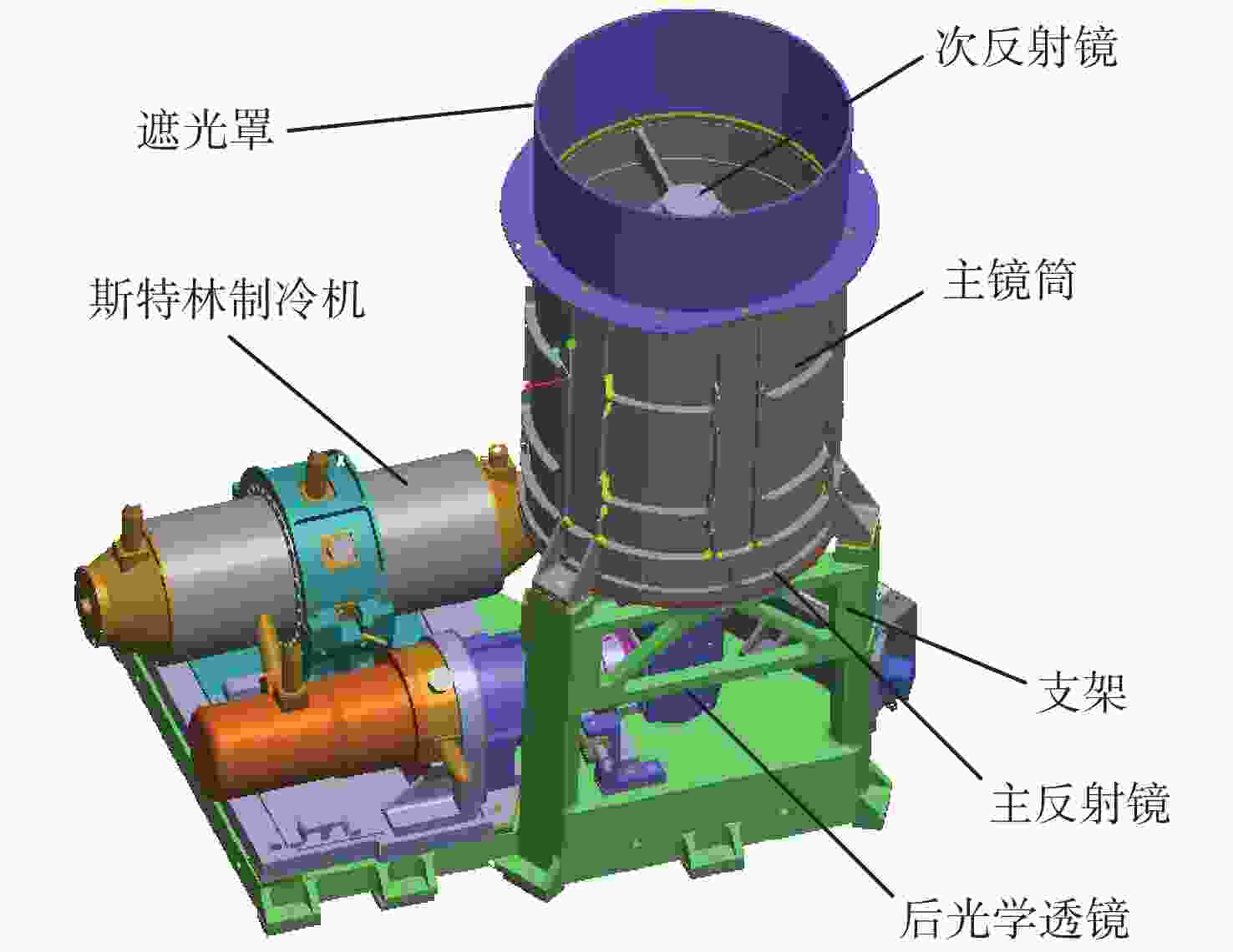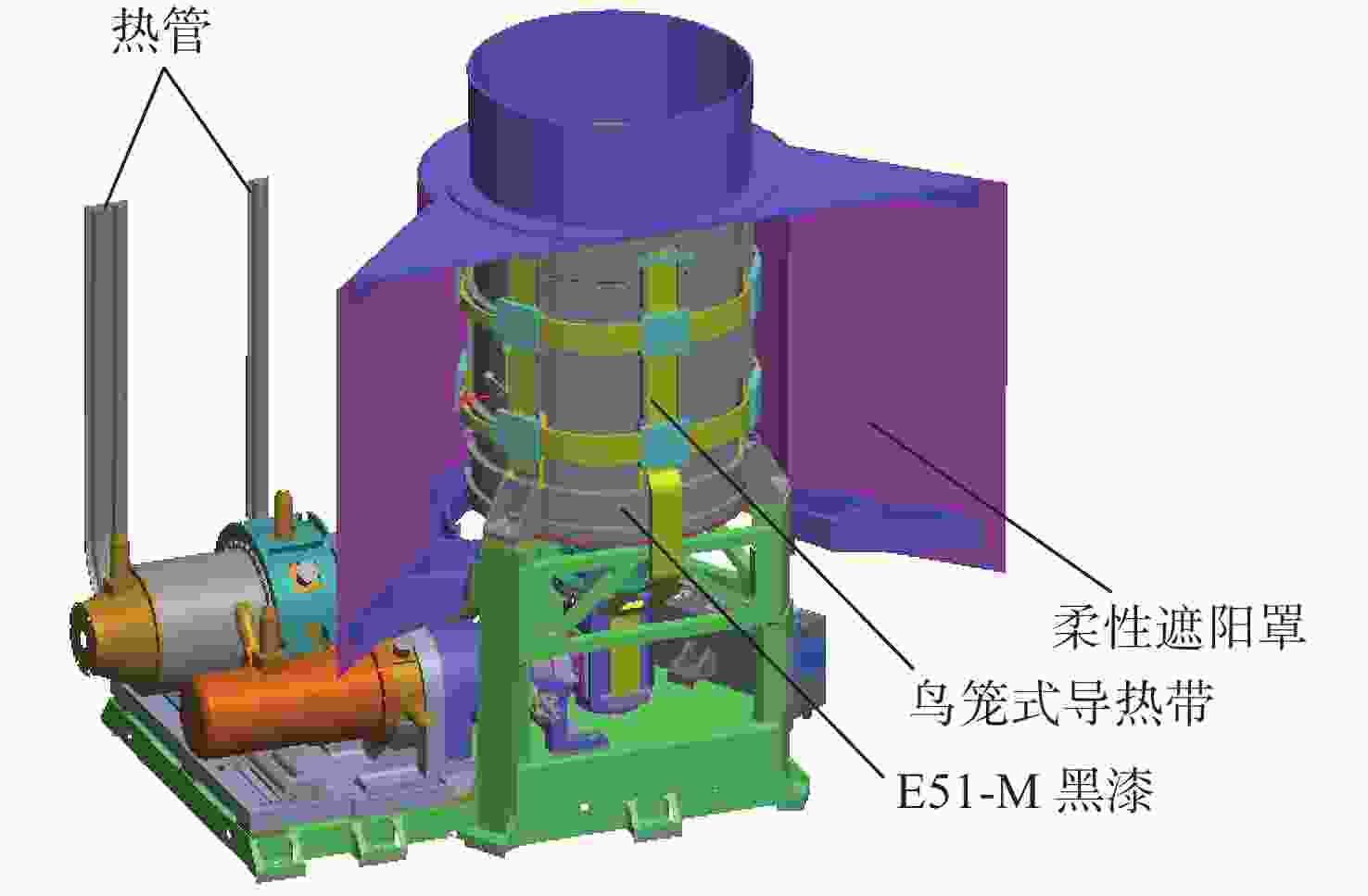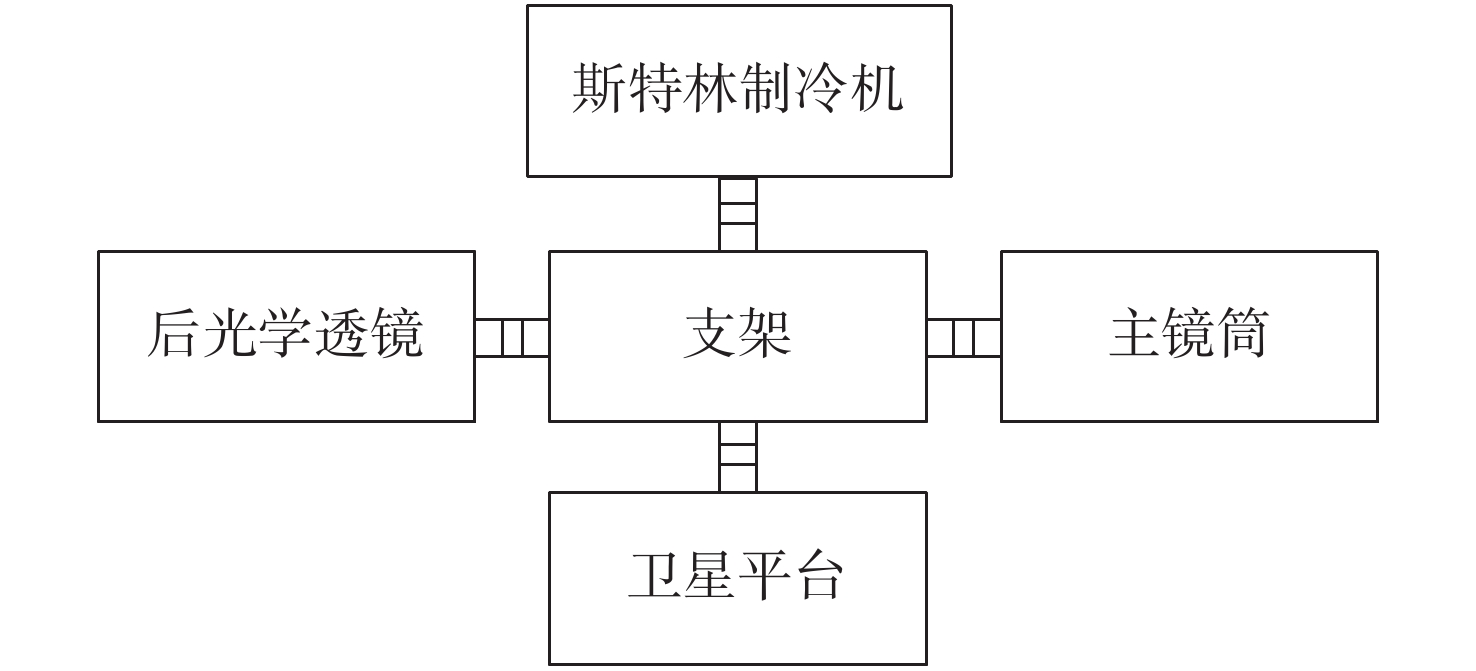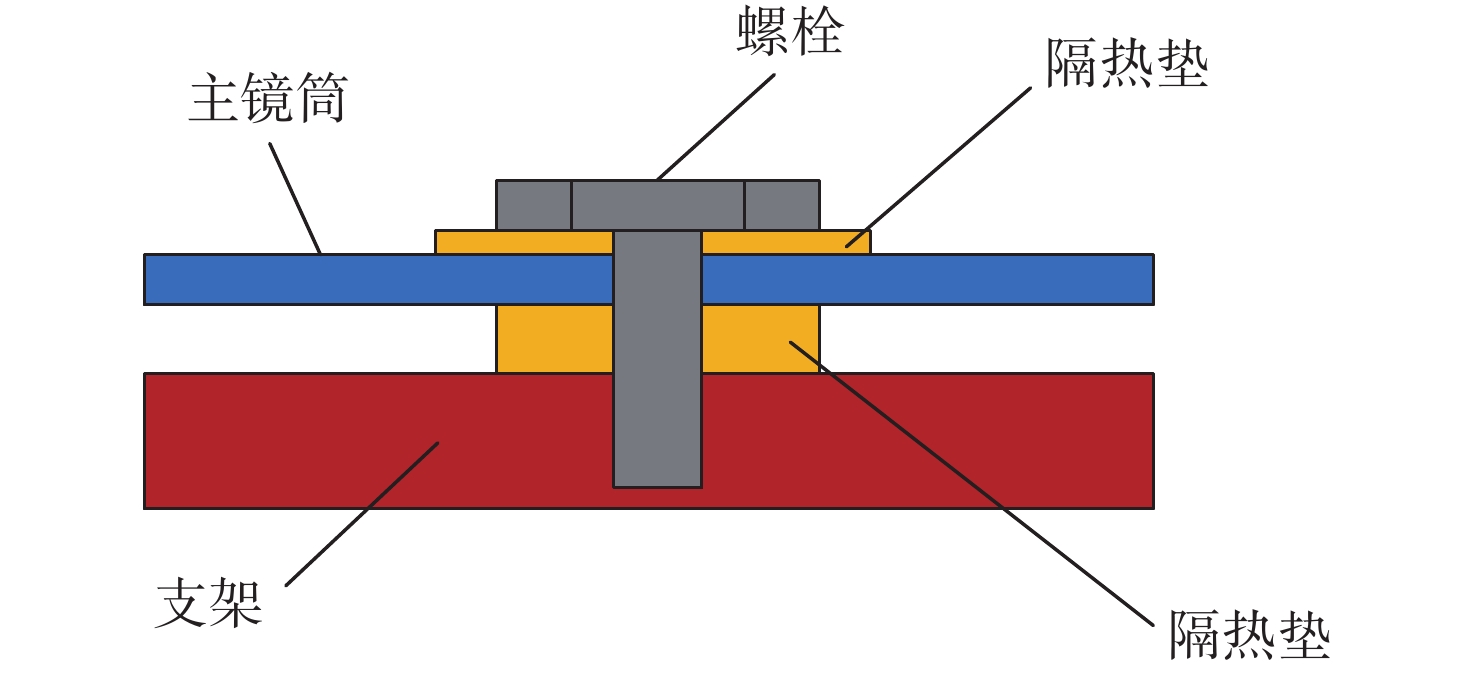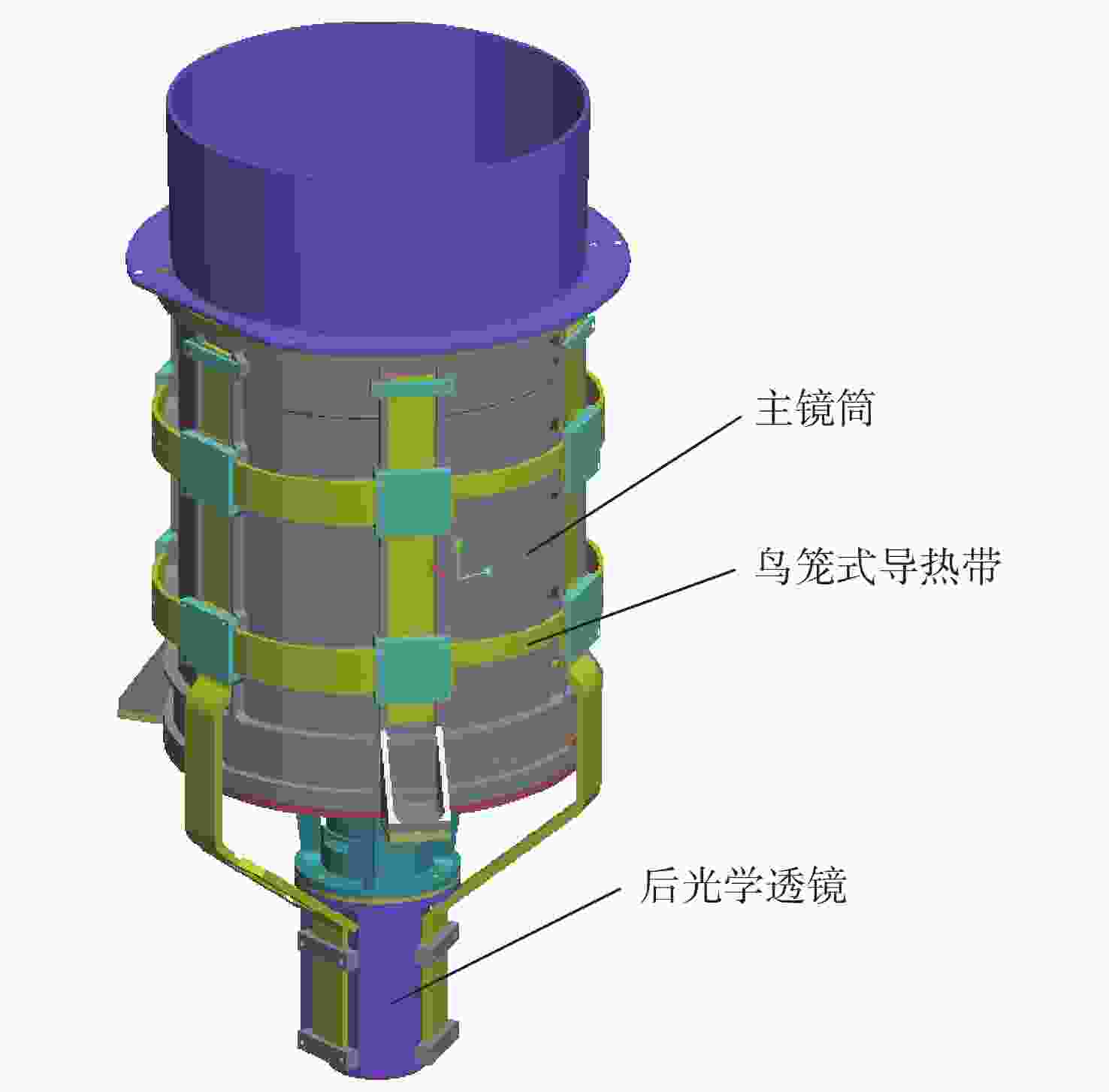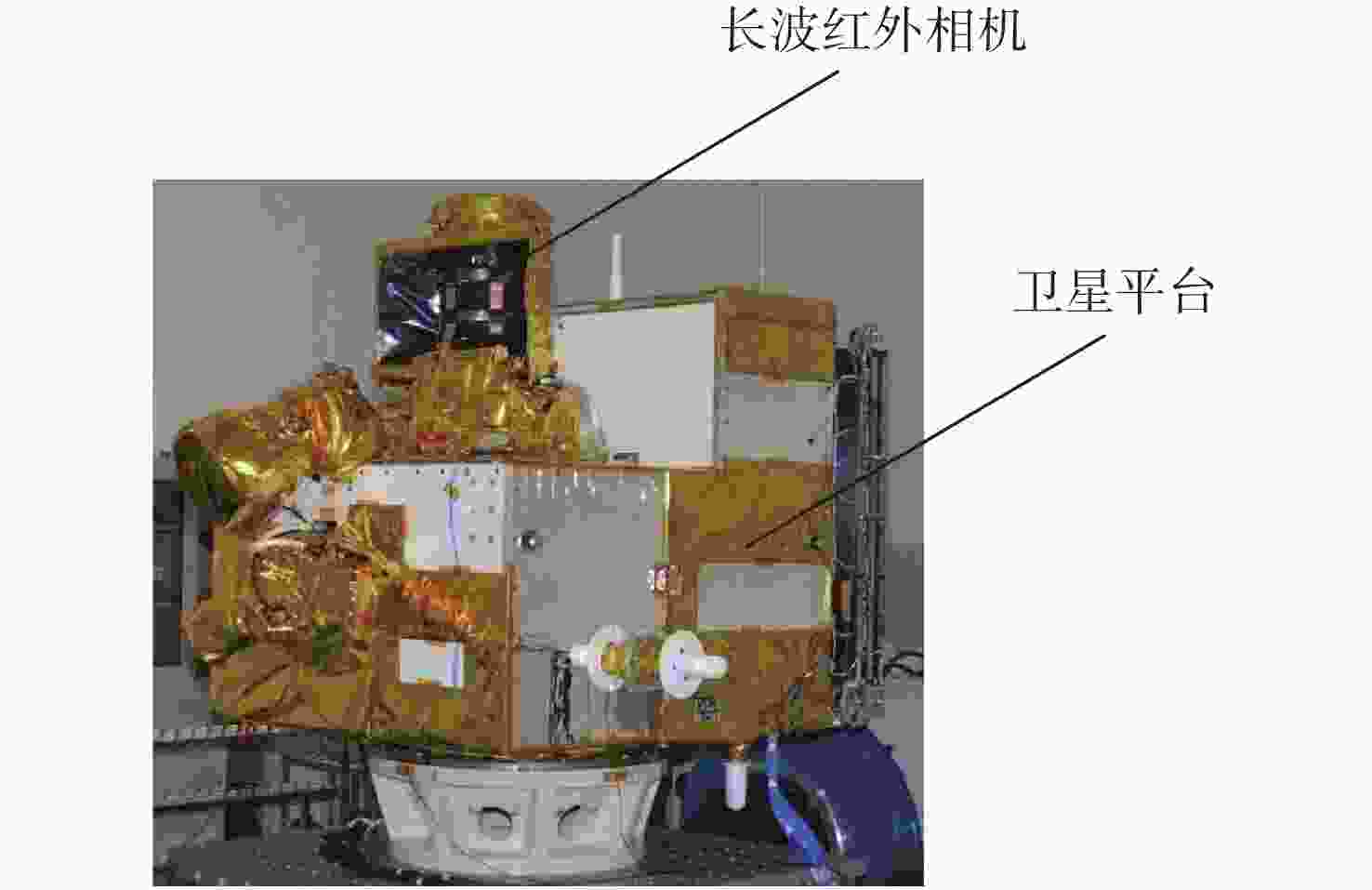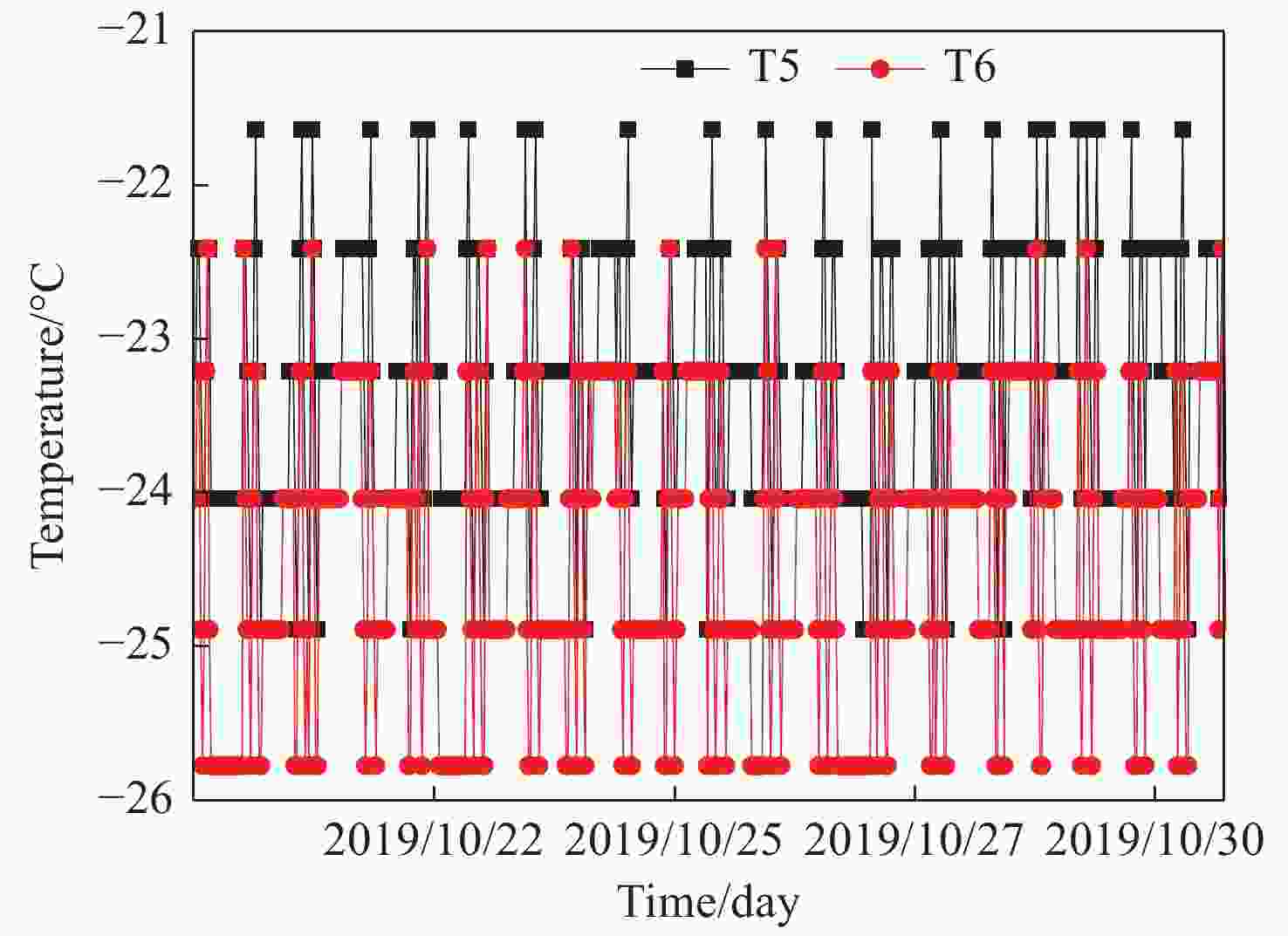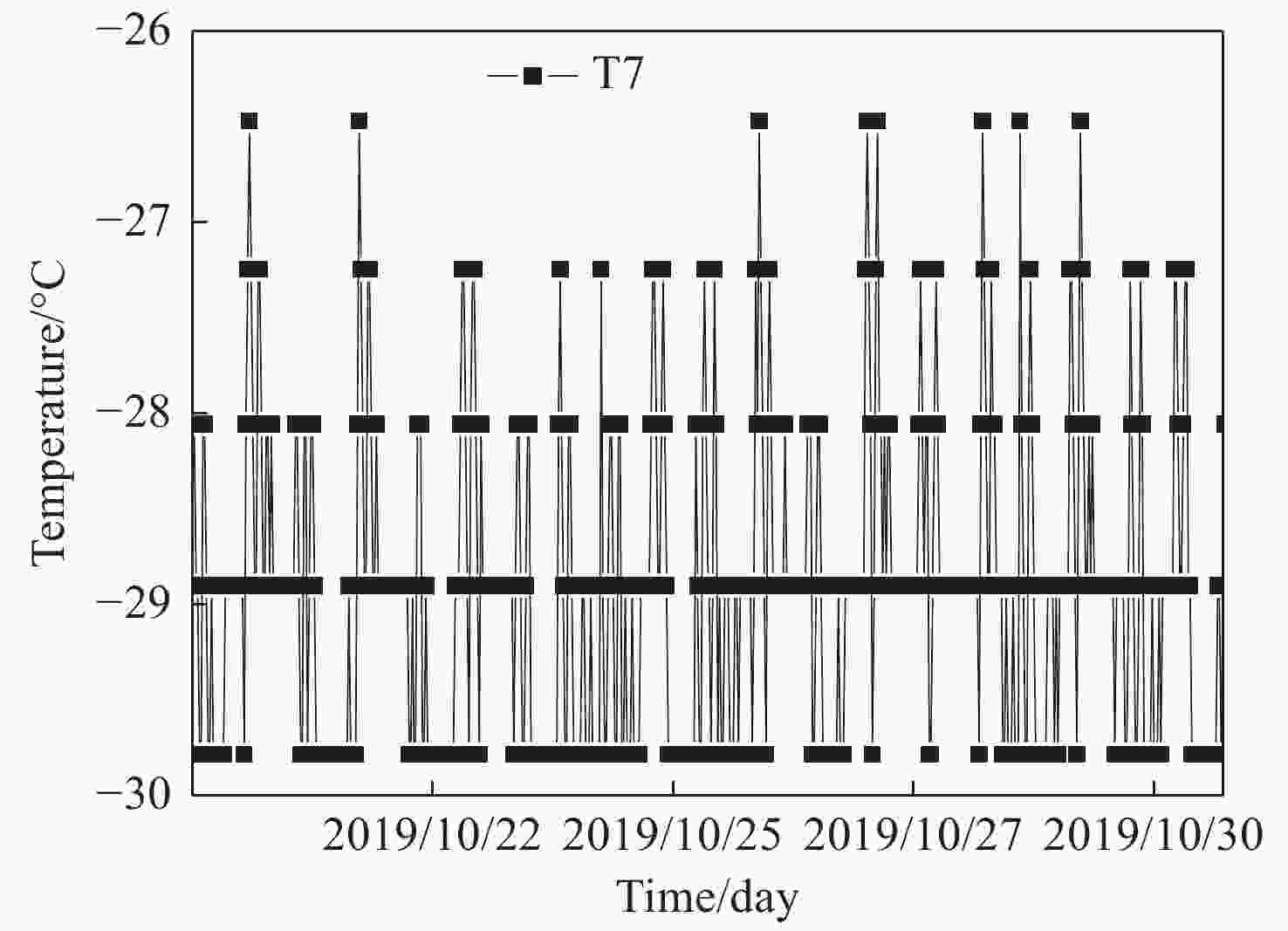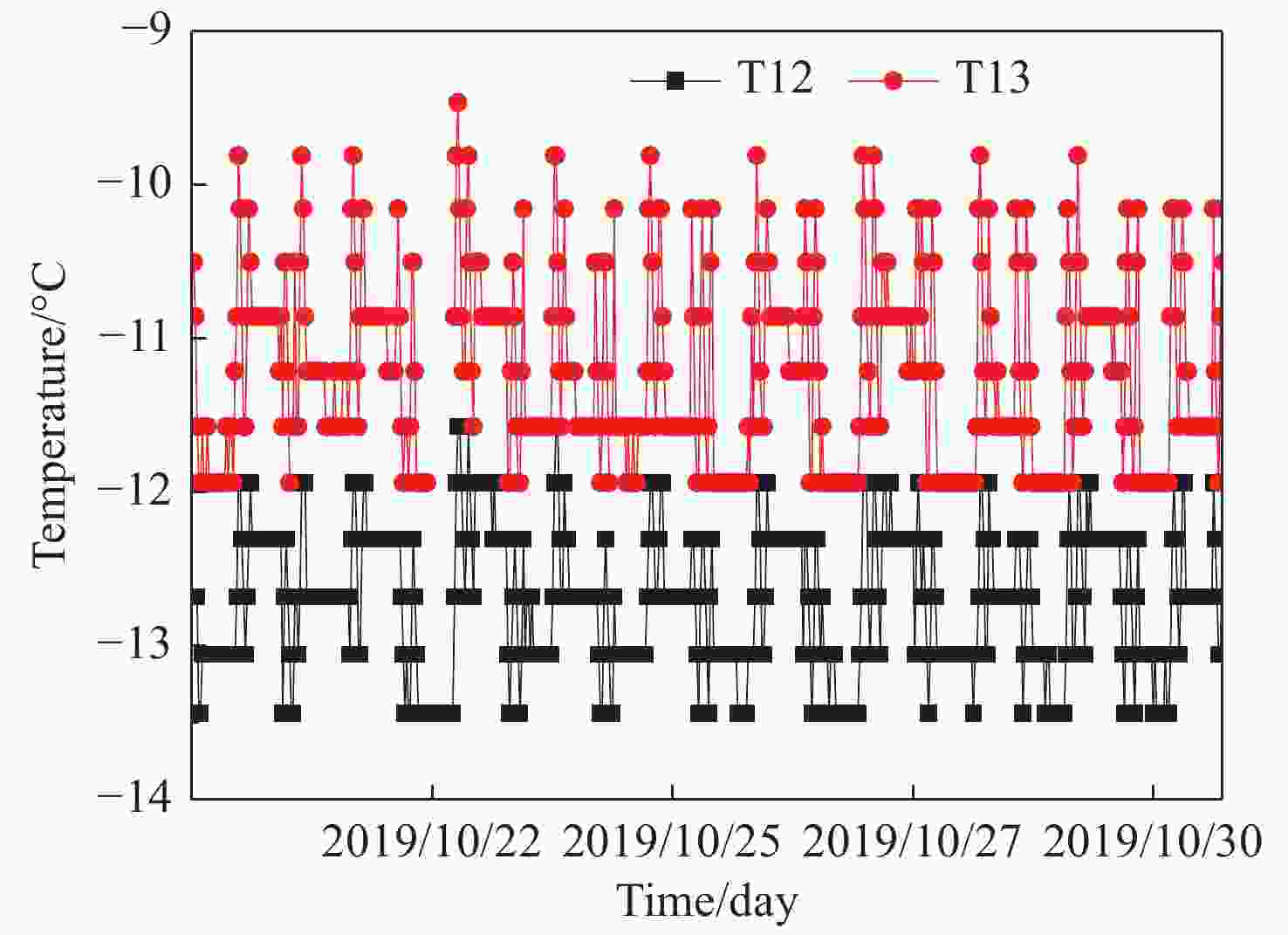Thermal control design and flight test of a satellite-borne cryogenic optical system
-
摘要:
星载长波红外相机工作时需要将整个光学系统的温度降低至−20 °C以下,以减少背景红外辐射的影响。在弱导热连接结构设计的基础上,研制了Ω型柔性遮阳装置,通过直接辐冷方式实现了光学系统的低温设计;研制了鸟笼式三维导热带,实现了主镜筒的均温设计。作为国内首个在空间领域应用的低温光学系统随实践九号B星进行了在轨飞行试验,结果表明,整个光学系统温度可长期保持在−35 °C~−20 °C,主镜筒圆周温度差小于4 °C。该热控设计方法简单有效,可以为类似星载红外光学系统的热设计提供参考。
Abstract:In order to reduce influence of background infrared radiation, the temperature of the whole optical system should be below −20 °C for satellite-borne long-wave infrared imagers working in orbit. On the base of the weak heat conduction structure, a Ω type flexible sunshield made of MLI was developed and a cryogenic optical system was achieved through direct radiation cooling. Cage-like three-dimensional heat conduction straps made of copper were developed and an isothermal design for the body tube was realized. The cryogenic optical system applied to space remote sensing was used for the first time in China when it was tested in orbit with SJ-9B satellite. The results showed the temperature of the whole optical system could be maintained at −35 °C~−20 °C all the time, and the temperature difference in the body tube was no more than 4 °C. All flight test data met the temperature requirement of the long-wave infrared imager. This thermal control method is simple and effective, which can provide a reference for the thermal design of similar satellite-borne infrared optical systems.
-
表 1 长波红外相机各部分材料以及控温需求
Table 1. Materials and temperature requirements of the imager’s components
零件名称 温度水平( °C) 温度均匀性( °C) 材料 次反射镜 −35~−20 / 石英玻璃 主镜筒 −35~−20 圆周温差≤5 殷钢 主反射镜 −35~−20 / 石英玻璃 后光学透镜 −35~−20 / Ge晶体 相机支架 −20~0 / 铝合金 制冷机 −20~20 / / 表 2 地面热平衡试验光学系统温度测试结果
Table 2. Temperatures in different positions (shown in Fig.10) of the optical system in the thermal balance test
温度测点位置 温度测点代号 温度水平( °C) 温度均匀性( °C) 主镜筒 T1 −31.9~−28.5 圆周温差:4.3 T2 −31.9~−28.5 T3 −27.6~−26.6 主反射镜 T4 −27.6~−26.6 / 后光学透镜 T5 −25.6~−22.7 / T6 −26.6~−23.7 / 次反射镜 T7 −32.3~−31.9 / -
[1] 单秋莎, 谢梅林, 刘朝晖, 等. 制冷型长波红外光学系统设计[J]. 中国光学,2022,15(1):72-78. doi: 10.37188/CO.2021-0116SHAN Q SH, XIE M L, LIU CH H, et al. Design of cooled long-wavelength infrared imaging optical system[J]. Chinese Optics, 2022, 15(1): 72-78. (in Chinese) doi: 10.37188/CO.2021-0116 [2] 汤天瑾, 李岩. 红外相机共孔径双波段成像光学系统[J]. 应用光学,2015,36(4):513-518. doi: 10.5768/JAO201536.0401004TANG T J, LI Y. Dual-band common aperture optical system for infrared camera[J]. Journal of Applied Optics, 2015, 36(4): 513-518. (in Chinese) doi: 10.5768/JAO201536.0401004 [3] 陈建发, 潘枝峰, 王合龙, 等. 基于制冷型探测器的双波段红外光学系统无热化设计[J]. 电光与控制,2019,26(10):83-86. doi: 10.3969/j.issn.1671-637X.2019.10.017CHEN J F, PAN ZH F, WANG H L, et al. Athermalization design of a dual-band infrared optical system with cryogenic detector[J]. Electronics Optics &Control, 2019, 26(10): 83-86. (in Chinese) doi: 10.3969/j.issn.1671-637X.2019.10.017 [4] 刘星洋, 翟尚礼, 李靖, 等. 制冷型中波红外偏振成像光学系统设计[J]. 红外与激光工程,2021,50(2):20200208. doi: 10.3788/IRLA20200208LIU X Y, ZHAI SH L, LI J, et al. Design of cooled medium-wave infrared polarization imaging optical system[J]. Infrared and Laser Engineering, 2021, 50(2): 20200208. (in Chinese) doi: 10.3788/IRLA20200208 [5] 陆燕, 刘恩光, 谢荣建. 国外空间红外观测中的低温光学技术发展概况[J]. 真空与低温,2011(S1):530-536.LU Y, LIU E G, XIE R J. Development of low-temperature optical technology in foreign space infrared observation[J]. Vacuum &Cryogenics, 2011(S1): 530-536. (in Chinese) [6] HIRABAYASHI M, NARASAKI K, TSUNEMATSU S, et al. Thermal design and its on-orbit performance of the AKARI cryostat[J]. Cryogenics, 2008, 48(5-6): 189-197. doi: 10.1016/j.cryogenics.2008.03.003 [7] 张旋, 赵高飞, 潘鸣. 空间红外相机高精度低温光学扫描技术研究[J]. 科学技术与工程,2012,12(16):3995-3999. doi: 10.3969/j.issn.1671-1815.2012.16.047ZHANG X, ZHAO G F, PAN M. High precision cryogenic scanning technology for space infrared camera[J]. Science Technology and Engineering, 2012, 12(16): 3995-3999. (in Chinese) doi: 10.3969/j.issn.1671-1815.2012.16.047 [8] 刘伏龙, 李春林. 低温光学技术在航天遥感器上的应用研究[J]. 真空与低温,2011(S1):537-543.LIU F L, LI CH L. Application of cryogenic optical technology in space borne remote sensors[J]. Vacuum &Cryogenics, 2011(S1): 537-543. (in Chinese) [9] 郑兴林, 马龙. 光学遥感器微晶玻璃镜头组件空间低温模拟试验技术[J]. 航天器环境工程,2009,26(3):267-271. doi: 10.3969/j.issn.1673-1379.2009.03.016ZHENG X L, MA L. Low-temperature simulation test technology of nucleated glass lens used for the optical remote sensor in space environment[J]. Spacecraft Environment Engineering, 2009, 26(3): 267-271. (in Chinese) doi: 10.3969/j.issn.1673-1379.2009.03.016 [10] 马宁, 刘奕, 李江勇, 等. 红外低温光学关键技术研究综述[J]. 激光与红外,2017,47(10):1195-1200. doi: 10.3969/j.issn.1001-5078.2017.10.001MA N, LIU Y, LI J Y, et al. Review on key technologies of infrared cryogenic optics[J]. Laser &Infrared, 2017, 47(10): 1195-1200. (in Chinese) doi: 10.3969/j.issn.1001-5078.2017.10.001 [11] 周超. 低温红外系统光机结构设计[J]. 红外与激光工程,2013,42(8):2092-2096. doi: 10.3969/j.issn.1007-2276.2013.08.029ZHOU CH. Opto-mechanical design for a cryogenic IR system[J]. Infrared and Laser Engineering, 2013, 42(8): 2092-2096. (in Chinese) doi: 10.3969/j.issn.1007-2276.2013.08.029 [12] 刘银年, 王建宇, 薛永祺. 环境减灾-1B卫星红外相机的研制[J]. 航天器工程,2009,18(6):50-56.LIU Y N, WANG J Y, XUE Y Q. Infrared scanner of HJ-1B satellite[J]. Spacecraft Engineering, 2009, 18(6): 50-56. (in Chinese) [13] 刘银年. “高分五号”卫星可见短波红外高光谱相机的研制[J]. 航天返回与遥感,2018,39(3):25-28. doi: 10.3969/j.issn.1009-8518.2018.03.003LIU Y N. Visible-shortwave infrared hyperspectral imager of GF-5 satellite[J]. Spacecraft Recovery &Remote Sensing, 2018, 39(3): 25-28. (in Chinese) doi: 10.3969/j.issn.1009-8518.2018.03.003 [14] 闵桂荣, 郭舜. 航天器热控制[M]. 2版. 北京: 科学出版社, 1998.MIN G R, GUO SH. Space Thermal Control[M]. 2nd ed. Beijing: Science Press, 1998. (in Chinese). -






 下载:
下载:
